Don't worry, winter turns Switzerland into a natural playground and there are plenty of other activities to get you outdoors in the beautiful snow. Take our cue and try one or two of these fun sports this season.
1. Cross-country skiing
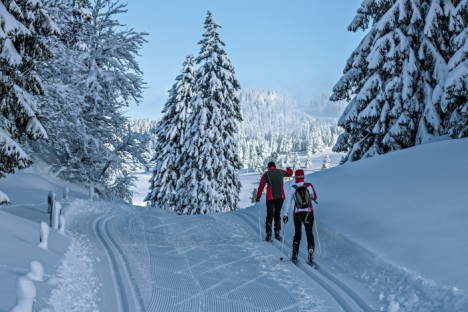
Photo: Marcus Gyger/Swiss Image
If downhill skiing isn’t your thing, try cross-country – or Nordic – skiing instead. It’s easier to learn than downhill and the gear is much cheaper to hire, plus it’s a good workout. There are numerous trails around the country. Be inspired by the mighty Engadin Ski Marathon by taking to the tracks around Engadin St Moritz in eastern Switzerland, or head to the Jura mountains, where there are plenty of places to try the sport for the first time.
2. Ice skating
Most major cities in Switzerland set up an outdoor ice-rink or two during the winter months. The largest is the manmade outdoor Dolder rink in Zurich, which has been attracting keen skaters since the 1930s. Or try Interlaken’s Ice Magic event, set up in the centre of town until February.
But you can’t beat skating on the vast Lac de Joux in the Jura. At over 1,000m altitude, the 9.5km2 lake often freezes over in winter to become the largest natural ice rink in Europe.
3. Snowshoeing
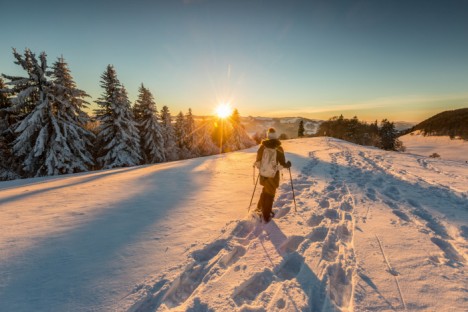
Photo: Jan Geerk/Swiss Image
When the snow descends, many of Switzerland’s numerous hiking trails turn into winter walking and snowshoeing paths. Head to the UNESCO World Heritage-listed Aletsch glacier in the canton of Valais to walk its beautiful trails including one that follows the ridge alongside the glacier.
Another great place to try it is Les Paccots in the Fribourg prealps, which offers organized snowshoe hikes including some at night, by head torch, stopping for a hearty fondue dinner in a mountain cabin along the way.
4. Ski-joering
Originally a Scandinavian activity, ski-joering has become popular in the Alps in recent years. It’s open to anyone, though a sense of balance and some ability on skis (cross-country, at least) will help you stay upright when being pulled along on skis by a galloping horse. Try it for yourself at Nax in the canton of Valais, which offers initiation lessons.
5.Tobogganing
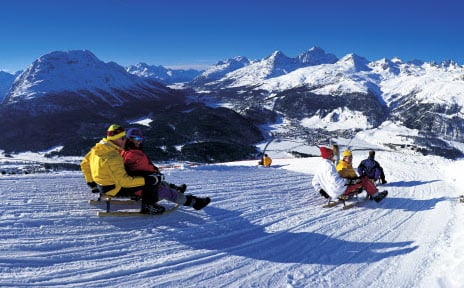
Photo: Christof Sonderegger/Swiss Image
If you haven’t tobogganed since childhood, you’re missing out – it’s tons of fun, whatever your age. There are runs all over Switzerland, but the longest is the run from the Faulhorn near Grindelwald in the Bernese Oberland. It takes dedication to get there – the start of the run, at 2,686m, is a two hour hike from the top of the First cable car. But you’re rewarded for your efforts with 15km of uninterrupted sledging back down to the village.
For a night-time experience, head to Les Diablerets in the Vaud Alps which offers night tobogganing on selected evenings, with the chance to warm up with fondue and wine in a mountain restaurant before donning your head torch for the 7km slide down.
6. Snowbiking
The latest craze, snow biking involves cycling on snowy trails on special ‘fat bikes’, which have extra-wide tyres to grip on the snow. A pioneer in the sport is the Swiss resort of Gstaad, which in February hosts the third annual Snow Bike Festival, where amateur and professional cyclists alike can compete in a series of events. Numerous sports shops in the village offer snow bikes for hire, if you want to try it for yourself.
7. Velogemel
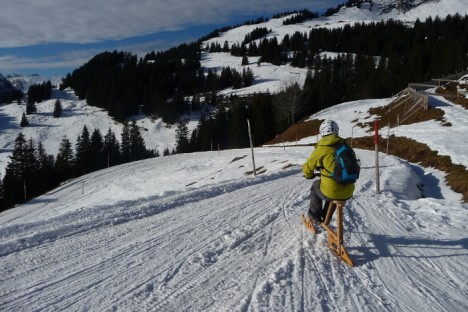
Photo: The Local
Long before fat bikes made cycling on snow ultra-cool, the residents of Grindelwald were using a wooden velogemel – their version of a snowbike – to get about. Invented over 100 years ago, it’s still made and sold in the village but is now more likely to be used for fun than for transport. Hire one in the village and take the bus up to Bussalp to ‘cycle’ back down again. Oodles of fun.
8. Ice fishing
High above Thun in the Bernese Oberland, Lake Hinterstocken on the Stockhorn mountain freezes over in winter. Make the most of this natural playground by trying a spot of ice-fishing on the lake. Hire equipment and buy a fishing permit from the Stockhorn Igloo Village, which has a handy bar to warm up in afterwards.
9. Curling
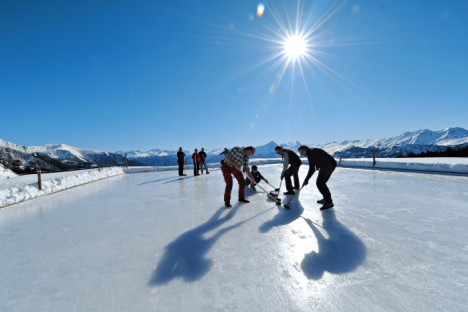
Alp Raguta. Photo: Karl Heinz Hug / Swiss Image
Like lawn bowls on ice, curling’s profile has been boosted over the past few years by thrilling matches at the winter Olympics. At Alp Raguta in the Graubünden you can try the sport on an outdoor curling rink. Or sign up to a two-hour introductory session at Lausanne-Olympique curling club, which also offers beginners’ courses if you want to take it further.
10. Snow tubing
Great fun for all ages, snow-tubing involves sliding down a curved bobsleigh track on an inflatable rubber ring. Have a go at the snow park at Trübsee near Engelberg in the canton of Nidwalden, or the tobogganing park at Leysin in the Vaud Alps.

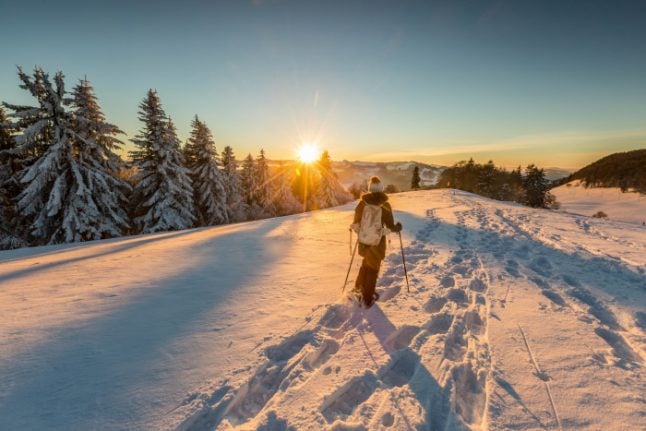

 Please whitelist us to continue reading.
Please whitelist us to continue reading.
Member comments